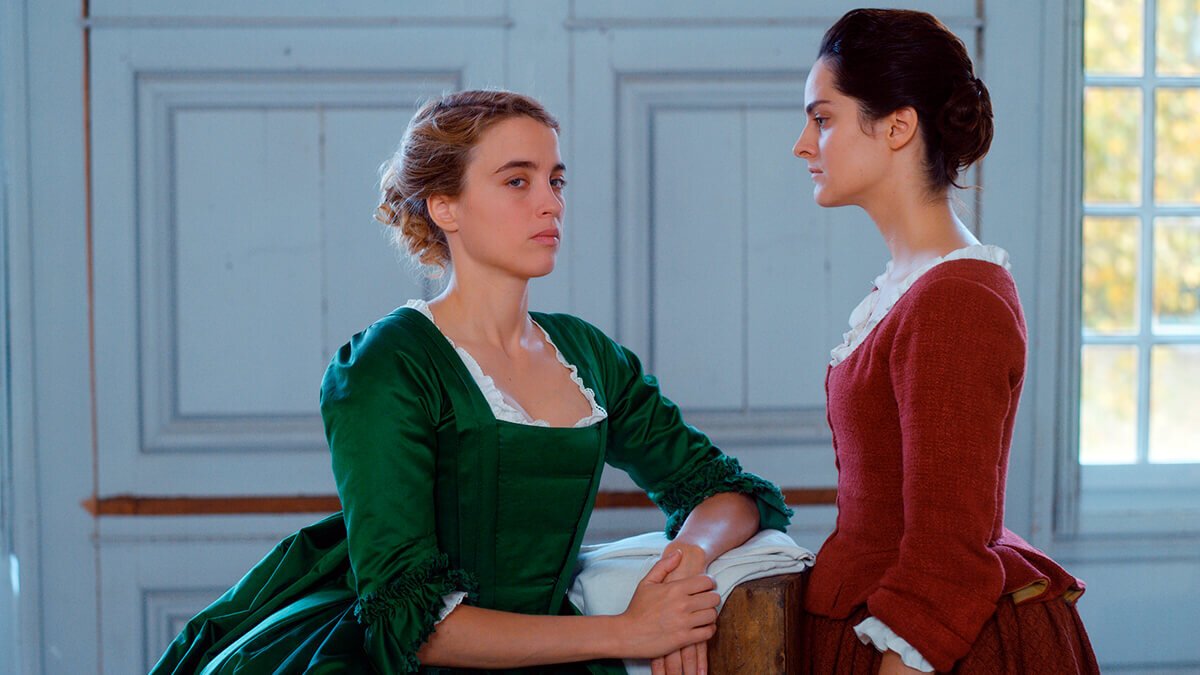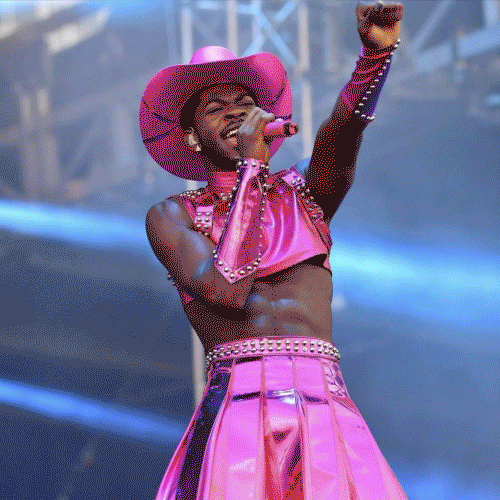'Portrait of a Lady on Fire' Isn’t Queer Cinema. It’s Better.
A friend of mine has, for as long as I’ve known her, had a photo of Adèle Haenel as the screensaver on her phone. “My wife!” she says glibly sometimes, gazing at Adèle, who is in fact not her wife but an extremely famous French actress and the star of the 18th century lesbian romance Portrait of a Lady on Fire, which opens in Atlanta this weekend. The photo on my friend’s phone is beguiling: Haenel turns away from the camera, the fingers of her right hand demurely covering not very much of her left breast. She is stunning.
She’s also a lesbian, which mattered to my friend when selecting her celebrity wife. (Her chances may still be slim – sorry, bud – but at least she’s drafting from the same team). It mattered to her then, and it mattered to me here, watching Haenel lilt across the screen with her co-star, Noémie Merlant, in a film that approaches a love story between two women with an almost unprecedented purity. Written and directed by Céline Sciamma, also a lesbian, Portrait of a Lady on Fire follows Marianne (Merlant), a painter summoned to an estate on the wind-swept coast of Brittany to create a portrait of Hëloise (Haenel), the future wife of a Milanese gentleman she’s never met, who wants to see what she looks like before they wed. Against a spare background and an even sparer score, Marianne and Hëloise slowly take each other in, their intense, tightly-wound love unspooling over a handful of days, without regret or catastrophe – typical tropes of queer film – and with a resolution as electrifying as it is unsentimental. Sciamma’s film, which won both Best Screenplay and the Queer Palm at the Cannes Film Festival, is a testament to what people of all marginalized identities know to be true: when we are allowed to tell our own stories, we tell them better than anyone else. Much better.
I wrote in this magazine last year of the particular sorrow of on-screen queerness performed by not-queer people; specifically, Rachel Weisz, our ravishing icon who is lamentably not queer. Over the past few years, Weisz has captivated us in several lesbian love stories, and while I swooned over her in each, I could never forget that she is not only straight, but married to Daniel Craig, literally Hollywood’s ur-man. And for all the joy of seeing women love each other onscreen, both Disobedience and The Favorite were written, directed, and performed by straight people. It doesn’t make those films any less fantastic, or their contribution to the queer canon any less profound.
But Portrait of a Lady on Fire is different. It is abundantly clear from each frame of this film that Cèline Sciamma is speaking to us from a language that lives in her blood. She drops her lovers on wild, empty cliffs: the world of men is so far away. Marianne and Hëloise are left alone for a delicious 6 days, in the company only of Sophie, the young, clear-eyed maid played by Luàna Bajrami, whose own story of self-determination inflects the plot with a quiet, feminine strength. Flung out far past the gaze of any man, Marianne and Hëloise are liberated from the patriarchy, and this story liberated from the patriarchal dictum that queer love be ciphered through a veil of sin. This is not another tragic, forbidden love story. This is, purely, a love story.
That was Sciamma’s intention from the beginning. Her goal, she told an interviewer earlier this month, was “to dedicate a film to love.” She was sure of that, and of one other thing: Adèle Haenel, her former partner and a longtime collaborator, would star in it. The rest – the portrait, the period, the gorgeous meta-narrative of artist and subject – all came later. In dedicating a film first and foremost to love, Sciamma rids herself of that seemingly inescapable fate of queer cinema: to frame a story in the context of the impossible. Instead, she approaches the subject with a fundamental belief in the possible, and she constructs the parameters that make it so. Sciamma explained the film’s lack of male authority to an Australian news outlet in December, “We know about the oppression, about the domination, so we’re not going to lose time portraying this.” Without anyone to intercede on behalf of the patriarchy, these lovers are free to explore each other, in sumptuous detail, at wondrous leisure. There is no “oh god we’re gay” exposition, no moral handwringing on either side.
And just as powerfully, there is no escape plotted. Hëloise knows her lot is to wed the anonymous Italian; while Marianne briefly expresses anguish at Hëloise’s acquiescence to her fate, the scene is mercifully free of moaning and throwing of paintbrushes. These women know they are suspended in a miraculous and ephemeral freedom. They are not going to lose time fighting the reality that awaits them. Instead, they are going to take this gift that they’ve been offered, and cradle it with exquisite presence. “Don’t sleep don’t sleep don’t sleep don’t sleep,” Marianne murmurs to a drowsy Hëloise on their last night. The two aren’t even touching; instead, they lie face to face on the bed, just gazing at each other. How many lesbian films have been made as alters to the god of female flesh; these lovers, triumphantly, are at their most electric when engaged merely in the art of looking.
Portrait of a Lady on Fire is, fundamentally, a film about seeing, and about being seen. Sparked into being by a queer filmmaker, and flamed alive by the vivid clarity of its queer star, its gaze feels as honest as it does incendiary. For queer women, it is a rare thing indeed to feel seen at all; to feel seen like this on screen, our own stories told by our own storytellers – that is truly a sight to behold.
—
Rachel Garbus is a writer, performer, teacher, and who knows what all else in Brooklyn, NY, formerly of Atlanta. She does live comedy, writes essays, and is woefully inept with all plants. Follow her at @goodgraciousrachel.
Archive
- September 2025
- August 2025
- May 2025
- February 2025
- November 2024
- October 2024
- September 2024
- August 2024
- July 2024
- June 2024
- May 2024
- April 2024
- October 2023
- July 2023
- June 2023
- May 2023
- April 2023
- March 2023
- February 2023
- June 2022
- April 2022
- March 2022
- January 2022
- December 2021
- October 2021
- September 2021
- August 2021
- July 2021
- June 2021
- May 2021
- April 2021
- March 2021
- February 2021
- January 2021
- December 2020
- October 2020
- September 2020
- August 2020
- July 2020
- June 2020
- May 2020
- April 2020
- March 2020
- February 2020
- January 2020
- December 2019
- November 2019
- October 2019
- September 2019
- August 2019
- July 2019
- June 2019
- May 2019
- April 2019
- March 2019
- February 2019
- January 2019
- December 2018
- November 2018
- October 2018
- September 2018
- August 2018
- July 2018
- June 2018
- May 2018
- April 2018
- March 2018
- February 2018
- January 2018
- December 2017
- November 2017
- October 2017
- September 2017
- August 2017
- July 2017
- June 2017
- May 2017
- April 2017
- March 2017
- February 2017
- January 2017
- December 2015
- November 2015
- October 2015
- September 2015
- August 2015
- July 2015
- June 2015
- May 2015
- April 2015









